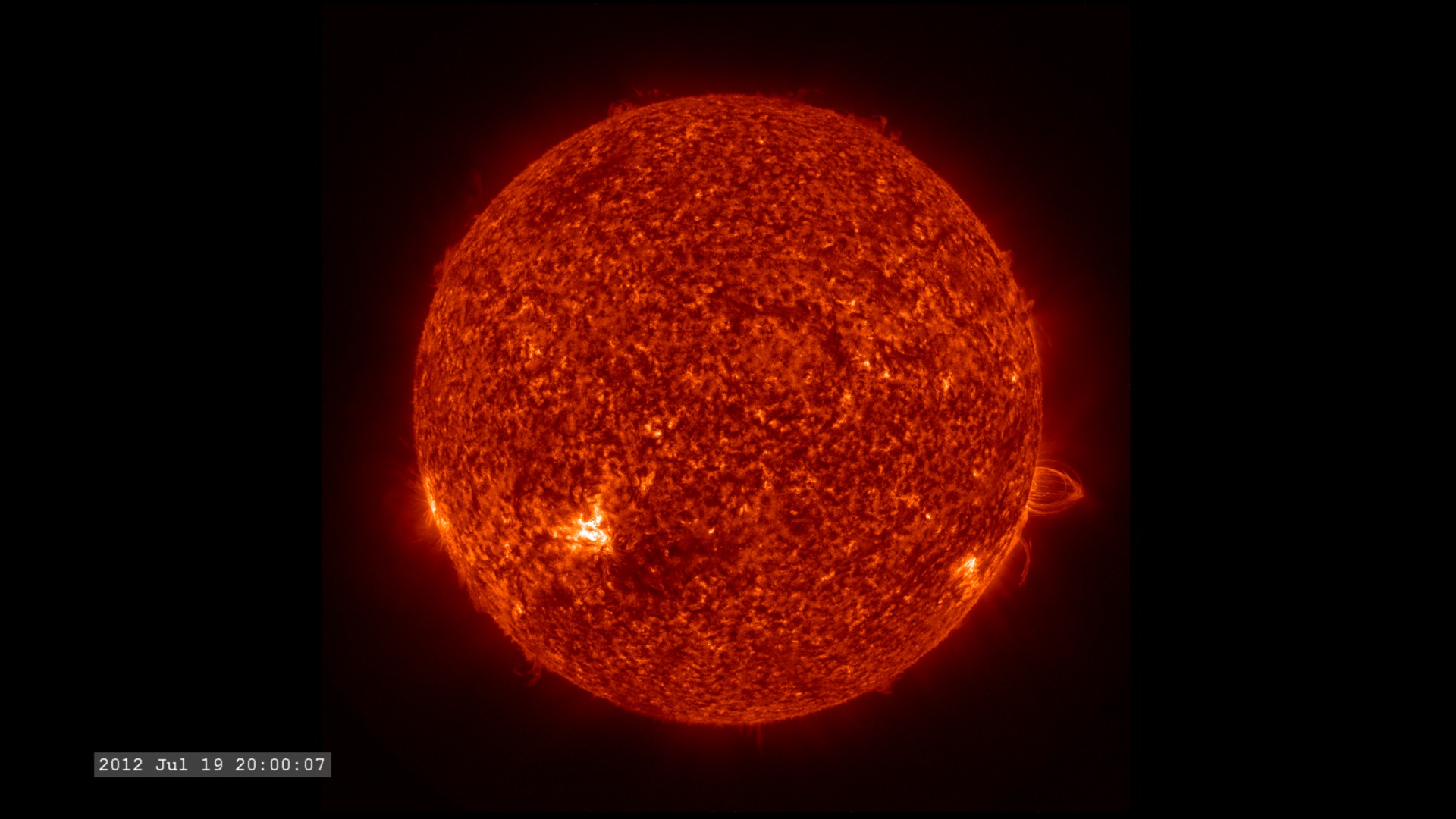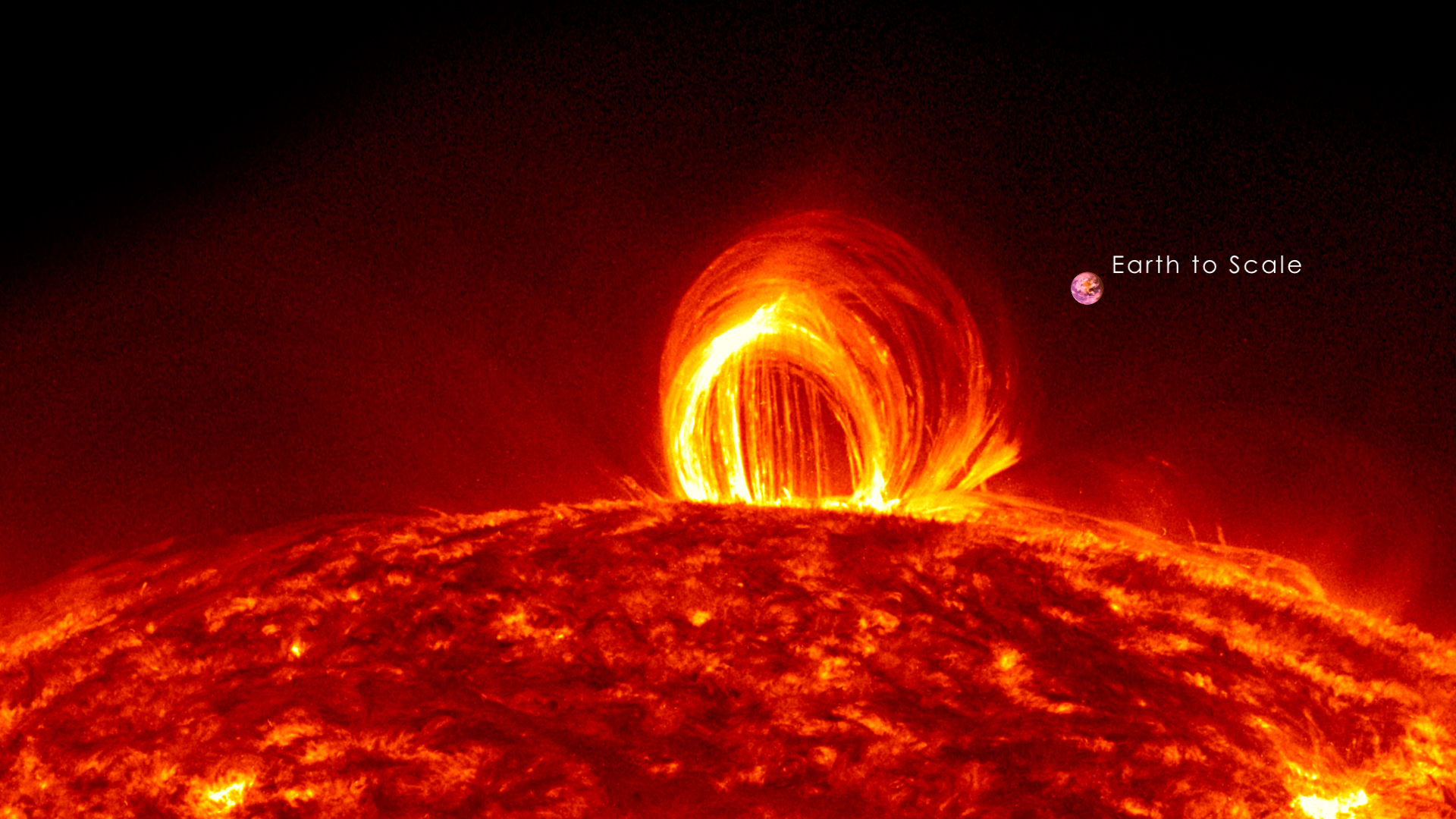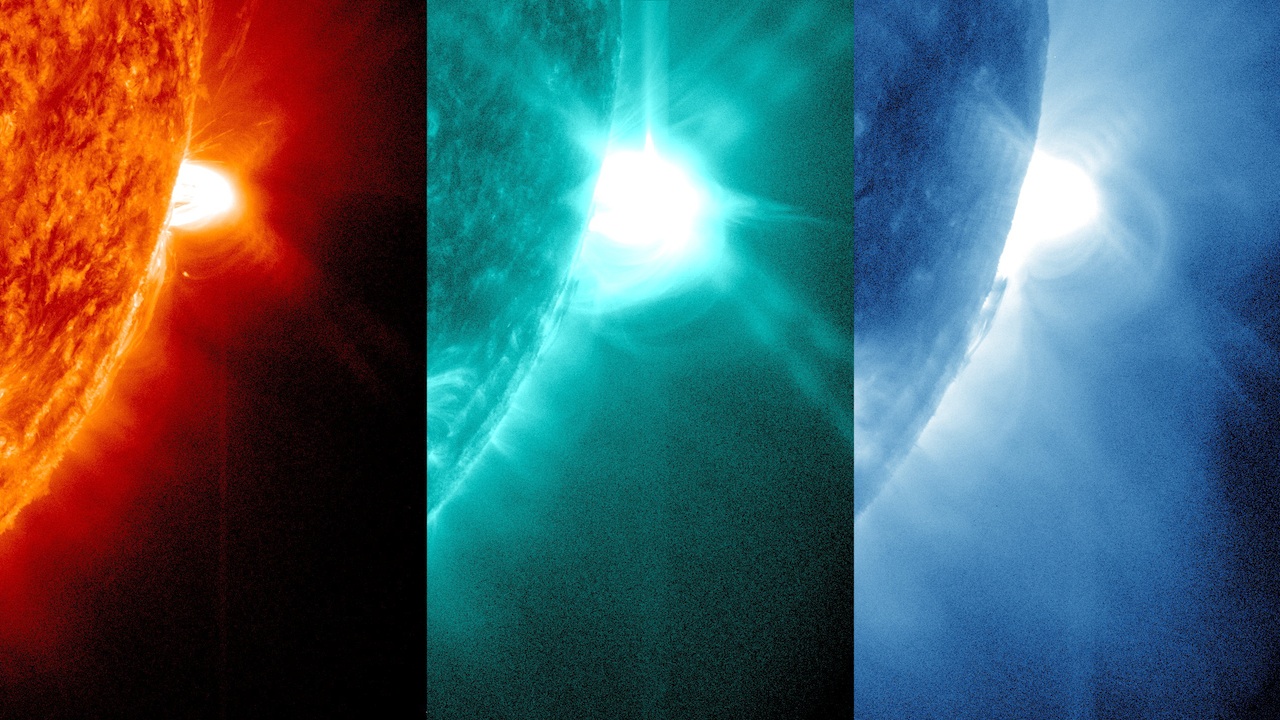Raindrops Falling On The Sun
On July 19, 2012, million-degree plasma in the sun's atmosphere began to cool and fall to the surface, resulting in a dazzling magnetic display known as coronal rain. Because the plasma is charged, it's strongly influenced by the sun's magnetic field. As it rained down, it condensed along twisted magnetic field lines close to the surface and formed giant streaming arcs, some as tall as five Earths stacked high. An ultra high-definition telescope aboard NASA's Solar Dynamics Observatory (SDO) captured images of the display, which lasted hours and was initiated by two eruptive events on the sun: a solar flare and coronal mass ejection. Scientists used a 304-angstrom-wavelength filter to see the plasma downpour. Watch the video to see it for yourself.

A NASA spacecraft records a plasma downpour in ultra HD.
Watch 21.5 hours of coronal rain compressed into three-and-a-half minutes.

Compare how Earth stacks up to the arcs of raining plasma.

The raining plasma is best seen using SDO's 304 Å wavelength filter, which resolves material at temperatures of 50,000 Kelvin.

The arcs of raining plasma are clearly visible in this full disk image of the sun.
For More Information
See NASA.gov
Credits
Please give credit for this item to:
NASA's Goddard Space Flight Center
Video and images courtesy of NASA/GSFC/SDO
-
Animators
- Tom Bridgman (Global Science and Technology, Inc.)
- Scott Wiessinger (USRA)
-
Video editor
- Scott Wiessinger (USRA)
-
Producer
- Scott Wiessinger (USRA)
-
Scientist
- C. Alex Young (ADNET Systems, Inc.)
-
Writer
- Karen Fox (ADNET Systems, Inc.)
Release date
This page was originally published on Thursday, March 28, 2013.
This page was last updated on Wednesday, May 3, 2023 at 1:52 PM EDT.


